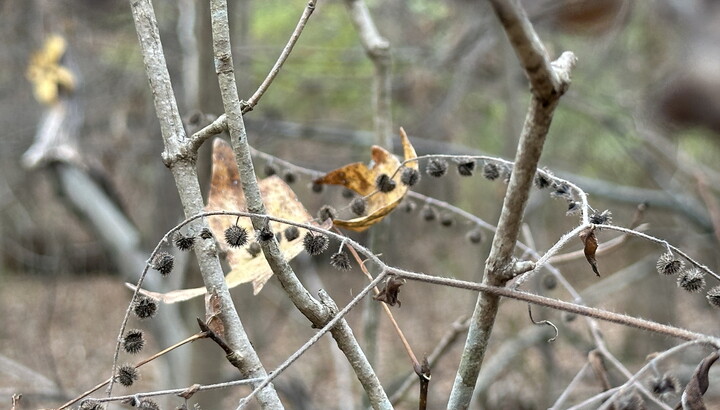The Carter Blog

Celebrating six women botanical artists
Mar 01, 2021
Since I was a kid, I’ve been fascinated by flowers of all kinds—dandelions in my yard, daffodils in the woods across the street, and honeysuckle growing on the back fence. And like most Texans, I look forward to seeing bluebonnets and other wildflowers in the spring. It’s undeniable that flowers’ myriad shapes and colors have a way of capturing our imaginations.
Natasha Bowdoin’s In the Night Garden does just that. Walking through her larger-than-life leaves and flowers gives you the impression of stepping into the pages of a storybook. None of her flowers is intended to perfectly recreate living flowers but instead invite you to imagine your own magical garden. The deep, painted shadows on the wall and floor call to mind a bedtime story or a fairy tale.
Bowdoin found some inspiration in our Library in Flora’s Dictionary (1837) by Elizabeth W. Wirt. Wirt’s book is a beautifully hand-colored example of 19th-century flora, pairing flower illustrations with poetry to both entertain and educate. Learning about Bowdoin’s interest in our library gave me the perfect opportunity to highlight some of our other botanical works by women artists. I hand-picked four 19th-century books and one lithograph from our vault—a bouquet of artists.
William P.C. Barton’s book A Flora of North America (1821–23) is one of the earliest botanical books printed in the United States. Barton’s wife, Esther, painted the watercolors to add vibrant life to his botanical drawings. Not much is written about her, but she also contributed to Barton’s earlier text Vegetable Materia Medica. The brightly colored, unusually shaped flowers of Aquilegia canadensis—red columbine—are reminiscent of Bowdoin’s bold shapes and colors.
Maria Martin Bachman was fascinated by John James Audubon’s drawings and, after meeting him, began to practice art in earnest, learning to paint lifelike birds, flowers, and insects. Impressed by her skill, Audubon included her hand-painted illustrations as some of the birds’ habitats in volumes 2 and 4 of The Birds of America (1840–44). The Cleome heptaphylla—spider plant—surrounded by ruff-necked hummingbirds is an example of Martin’s skill in accurately depicting plants with many intricate features. It also begs the question: What kind of creatures would visit Bowdoin’s Night Garden?
Emma Homan Thayer went on hiking trips to find the plants and flowers in Wild Flowers of the Rocky Mountains (1887). Rather than pick flowers, she brought them to life on paper, drawing and painting each to capture its beauty. In doing so, she was the first to document that a rare flower, the stream orchid, could be found growing wild in Colorado. The prickly poppy’s delicate pale blossoms wreathed in sharp, serrated leaves bring to mind the chaotic foliage and potential dangers hidden in Bowdoin’s Night Garden.
Emma Peachey was instrumental in reviving the 18th-century art of wax flower modeling and taught others to observe flowers in nature and recreate what they saw. Peachey self-published her Royal Guide to Wax Flower Modelling (1851) as an instructional guide to creating seasonal arrangements, safely mixing colors, and perfecting the craft’s techniques. Peachey groups flowers together in a purely aesthetic arrangement with different colors and shapes, much like the Night Garden’s vibrant abundance of plants.
Ruth Asawa, usually known for her woven wire sculptures, spent two months at the Tamarind Lithography Workshop in 1965 creating prints, many with floral subjects. The many overlapping lines and busy patterns in Chrysanthemums creates almost ghostly shapes and voids through which her impressions of the many-petaled flowers are visible. Like In the Night Garden, the many shapes and textures of Chrysanthemums may be overwhelming at first, but with time and careful attention, it is possible to see individual flowers in the whole.
Visitors can see Natasha Bowdoin’s In the Night Garden at the Carter through the end of 2021. The Library is open to the public during museum hours and staff is available for assistance.








